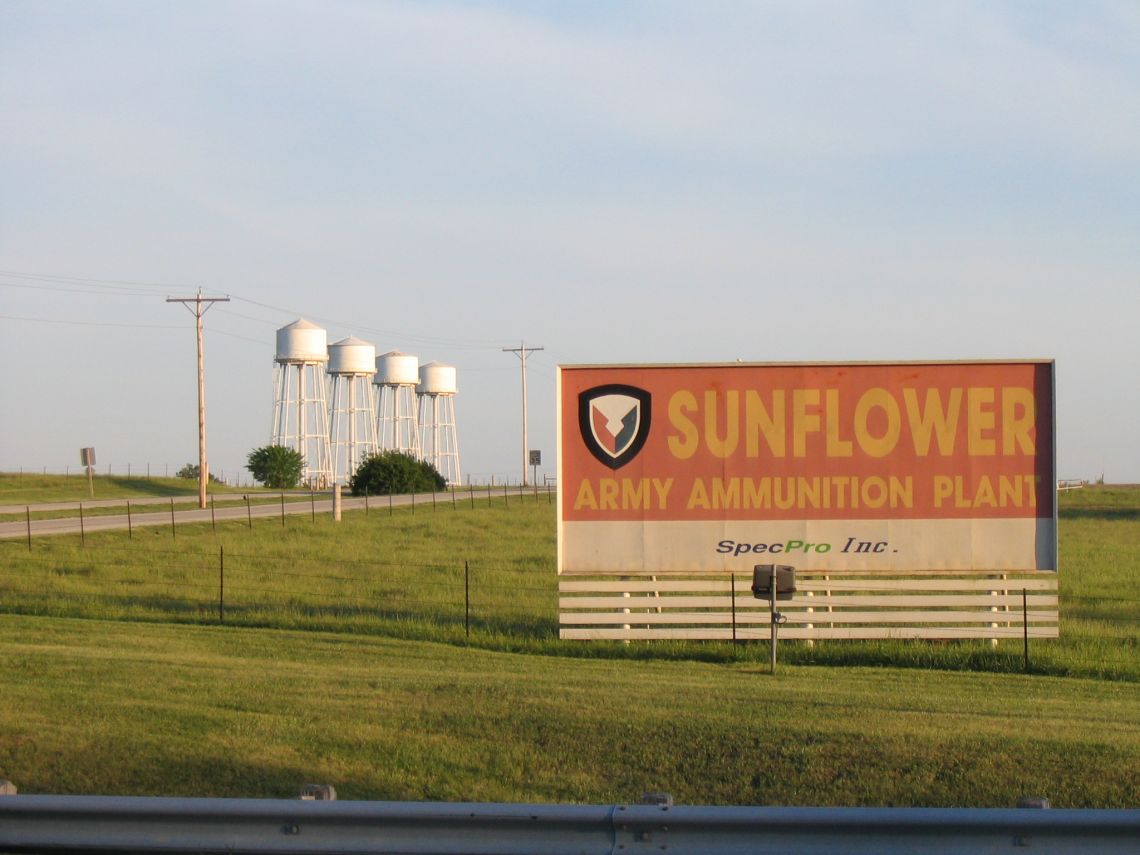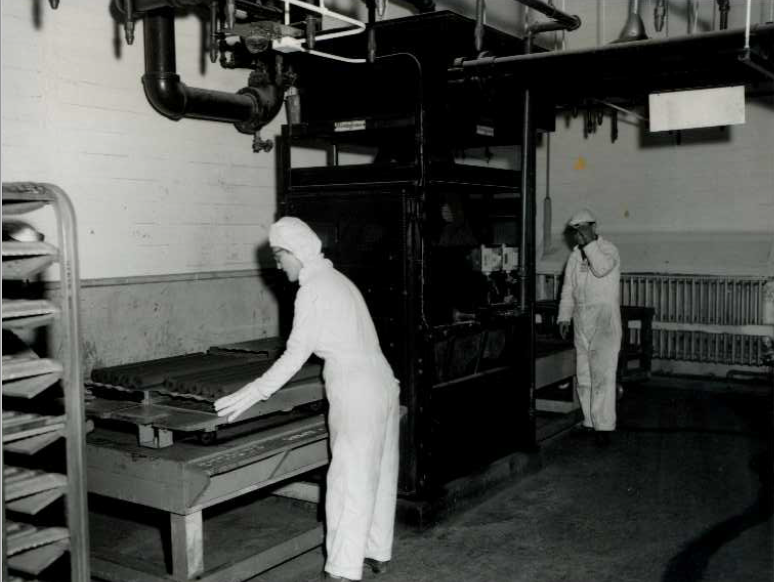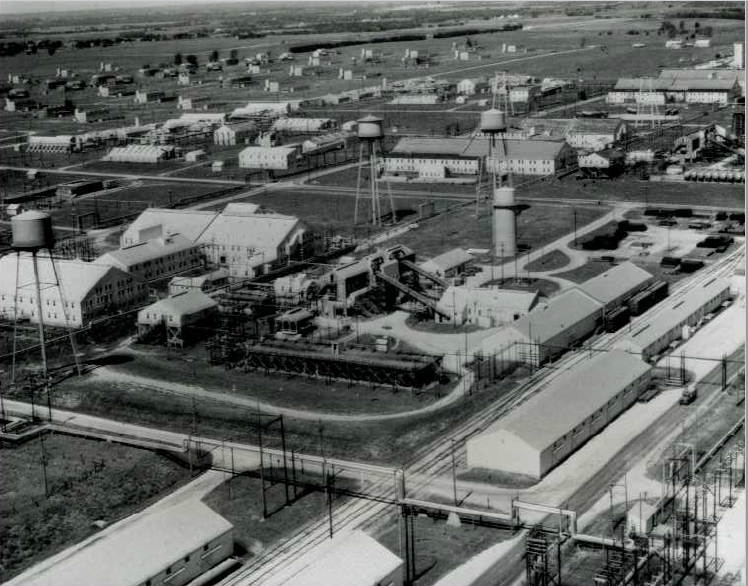BACKGROUND
The Sunflower AAP was originally known as the Sunflower Ordnance Works. Established in 1941, it was the world's largest smokeless powder plant. Construction then began immediately and was followed by the first production of propellant 10 months later. The plant was a government-owned, contractor-operated facility operated by the Hercules Powder Company. During World War II, the Sunflower Ordnance Works produced more than 200 million pounds of propellants and employed as many as 12,067 people. Following the war, the plant was placed in a partial inactive status, and in March 1947, the contract with Hercules Powder Company expired. The government took over maintenance and security in June 1948, when the plant was placed in full inactive status.

In 1951, the Sunflower Ordnance Works was reactivated due to the Korean War, and the operation of the plant was again contracted out to Hercules. This time, the plant produced more than 166 million pounds of propellants with a peak employment of 5,374. The plant was inactivated again in June 1960. On August 1, 1963, the name of the plant was changed from the Sunflower Ordnance Works to Sunflower Army Ammunition Plant. Two years later, in August 1965, the plant was reactivated to support the Vietnam War and produced more than 145 million pounds of propellants with a peak employment of 4,056. Sunflower AAP ceased operations in June 1971 and in 1972, was returned to inactive status. A major facility modernization program was started in August 1967. Between 1975 and 1979, a facility for the production of nitroguanidine was added. This facility was the first of its kind in North America. Production ran from 1984 until 1992, when the plant was again inactivated. Alliant Techsystems won a contract in March 1995 to market the use of the Sunflower AAP facilities. In 1997, Sunflower AAP was declared excess by the U.S. Army, and the General Services Administration began the process of selling the site. In October 2002, Army responsibility for disposal of the property was transferred from the Army Materiel Command to the Assistant Chief of Staff for Installation Management, Base Realignment and Closure Division.

On 24 July 2003, the Governor of Kansas approved a preliminary Finding of Suitability for Early Transfer (FOSET) allowing the Army to develop conveyance and other transfer related agreements for the conveyance of certain portions of Sunflower AAP prior to completion of all remedial action. In October 2004, Public Law 108-375, Section 2841, was enacted to authorize the Army, in consultation with the General Services Administration, to convey Sunflower AAP to an entity selected by the Johnson County Board of Commissioners. In July 2005, the Army submitted the transfer documentation to the Governor of Kansas for approval and signature. Pursuant to the enacted legislation and the Governor’s approval, Johnson County approved Sunflower Redevelopment, LLC (SRL) as the redeveloper, and on August 31, 2005, all 9,065 acres were conveyed to SRL. A staff of two Army employees remains to provide oversight and on-the-ground coordination of the extensive environmental and explosive hazard cleanup. They provide contracting officer representation and interface with the property owner and community leaders as necessary until such time as the Army completes its remedial obligation at the site.
In February 1995, the Environmental Protection Agency (EPA) proposed that the site be placed on the National Priorities List, but it was never listed. Based on investigations, studies, and documentation, the Army has identified 5,300 acres of Sunflower that contain environmental and hazardous substances that will require further investigation and response actions. There are more than 80 sites in the 5,300 acres identified as requiring environmental cleanup that have not yet reached a response complete status. The primary contaminants of concern are lead, volatile organic compounds, and munitions constituents. The affected media of concern are groundwater, buildings, and soils. The presence of known or suspected explosive hazards is limited to high concentrations of nitrocellulose, nitroguanidine, and nitroglycerin from past propellant manufacturing. For the majority of the contaminated sites, the main soil contaminant is lead along with propellant compounds. Small pieces of propellant may be present on the ground or in shallow soil. There are approximately 2,800 acres, or 17 sites, potentially containing munitions constituents that pose a potential explosive hazard. Munitions constituents are known to be present in buildings/structures, production equipment, industrial sewer/process lines, and foundations. None of the 17 sites with explosive hazards were completely remediated or decontaminated. Sediments in drainage ditches and streams may be contaminated from past releases of hazardous constituents. Groundwater contamination was detected at depths ranging from 0.5 feet to 41.5 feet but over a limited portion of the site. The main groundwater contaminants are substances resulting from the degradation of propellants including nitrates, sulfates, and metals.

At the time of transfer, one third of the property was transferred clean, and the other two thirds were transferred under the FOSET prior to the completion of the cleanup. A sole-source contract with SRL was put into place for the explosive decontamination and environmental remediation of the FOSET property. The contract expired in 2010 without completing the remediation, and no new contract with SRL is feasible. The Army initiated its plan to self-perform the remainder of the remediation at the site. Several competitively sourced cleanup contracts were awarded in June and September 2015. Additional contracts were awarded September 2016 and December 2018 to address explosive hazards and to provide reports for Army Decision Documents respectively. Work is ongoing on all projects. The Army continues to coordinate with SRL, the property owner, on changes to the priority of work to achieve full cleanup and No Further Action determination.